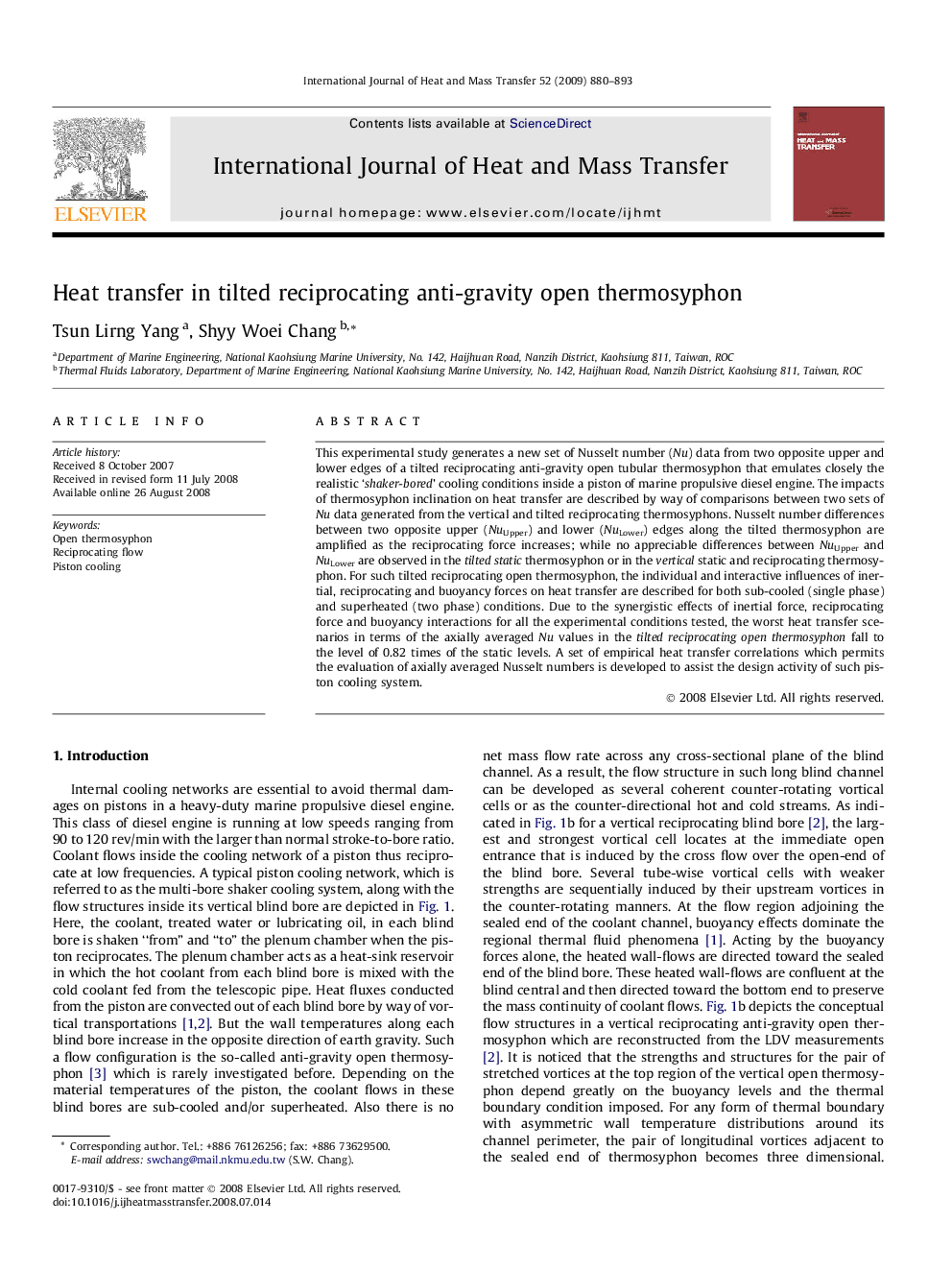| Article ID | Journal | Published Year | Pages | File Type |
|---|---|---|---|---|
| 660627 | International Journal of Heat and Mass Transfer | 2009 | 14 Pages |
This experimental study generates a new set of Nusselt number (Nu) data from two opposite upper and lower edges of a tilted reciprocating anti-gravity open tubular thermosyphon that emulates closely the realistic ‘shaker-bored’ cooling conditions inside a piston of marine propulsive diesel engine. The impacts of thermosyphon inclination on heat transfer are described by way of comparisons between two sets of Nu data generated from the vertical and tilted reciprocating thermosyphons. Nusselt number differences between two opposite upper (NuUpper) and lower (NuLower) edges along the tilted thermosyphon are amplified as the reciprocating force increases; while no appreciable differences between NuUpper and NuLower are observed in the tilted static thermosyphon or in the vertical static and reciprocating thermosyphon. For such tilted reciprocating open thermosyphon, the individual and interactive influences of inertial, reciprocating and buoyancy forces on heat transfer are described for both sub-cooled (single phase) and superheated (two phase) conditions. Due to the synergistic effects of inertial force, reciprocating force and buoyancy interactions for all the experimental conditions tested, the worst heat transfer scenarios in terms of the axially averaged Nu values in the tilted reciprocating open thermosyphon fall to the level of 0.82 times of the static levels. A set of empirical heat transfer correlations which permits the evaluation of axially averaged Nusselt numbers is developed to assist the design activity of such piston cooling system.
